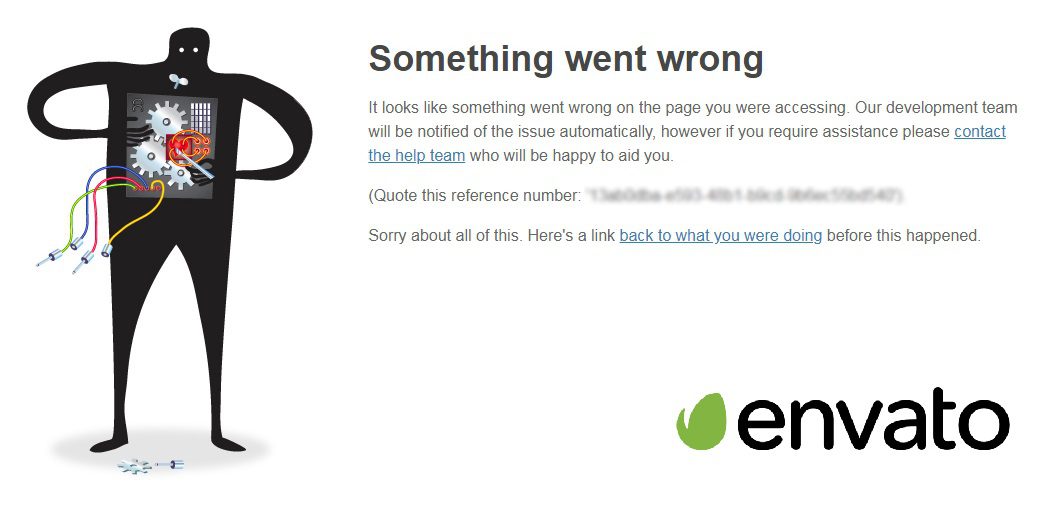
I’ve been part of the Envato ecosystem for a long time now. I started publishing WordPress plugins on CodeCanyon back in 2016. Like many of you, I was drawn to the platform because it gave independent developers like me a place to reach a global audience. It was exciting. It felt like you could build a sustainable business by doing what you love, creating tools that solve real problems.
Over the years, I released dozens of plugins. Some became bestsellers. Others didn’t. I went more with the shotgun approach, created tons of plugins, to see which works and which doesn’t. But all of them reflected the time, care, and effort I put into building things for the WordPress community. For a while, CodeCanyon really felt like home. I’ve had many years when I could comfortably live off my sales there. I’ve also had months, more recently, when the income was barely enough to cover basic family needs.
Sales dropped. Discovery became harder. The subscription model changed everything. I went from seeing regular payouts to watching them shrink to nearly nothing, even while maintaining and updating my products. I saw firsthand how long-time authors were pushed aside in favor of mass-produced, commoditized content. The connection between creator and customer was lost.
That’s when the idea for WPBay started to form. I didn’t just want to complain about the state of marketplaces. I wanted to build something better. A place where independent WordPress developers could sell their plugins and themes without being buried by algorithmic noise, race-to-the-bottom pricing, or the pressure of unlimited download models. A platform where quality, support, and the creator actually matter.
Don’t get me wrong, WPBay isn’t about replicating Envato. It’s about returning to what made marketplaces great in the first place: the relationship between builder and buyer. And that’s why I’ve been watching Envato’s recent evolution so closely. Not just as an observer, but as someone who built a business on it, was affected by its downfall, and decided to take action.
So I started digging into the numbers and reading through the Envato author forums. What I found confirmed what many of us already suspected. That’s why I decided to take a deeper look into what’s actually happening. I compiled the data. I read the forums. I talked to other authors. The numbers speak for themselves, and the sentiment across the community is loud and clear. This blog post is the result of my research, I will summarize it, so you guys will also understand what I found out.
Between 2018 and 2025, one of the internet’s most vibrant digital marketplaces, Envato, has seen a staggering drop in sales. According to data collected from publicly visible counters and cross-checked with archived versions of their marketplace pages, the total number of items sold across ThemeForest and CodeCanyon dropped by over 70%. These are the official statistics comes from Envato, you can check the previous one at archive.org:
- 2018: 7,325,490
- 2019: 6,093,332
- 2020: 5,848,249
- 2021: 4,874,317
- 2022: 3,692,881
- 2023: 2,955,605
- 2024: 2,913,031
- 2025 projection: ~2,512,000
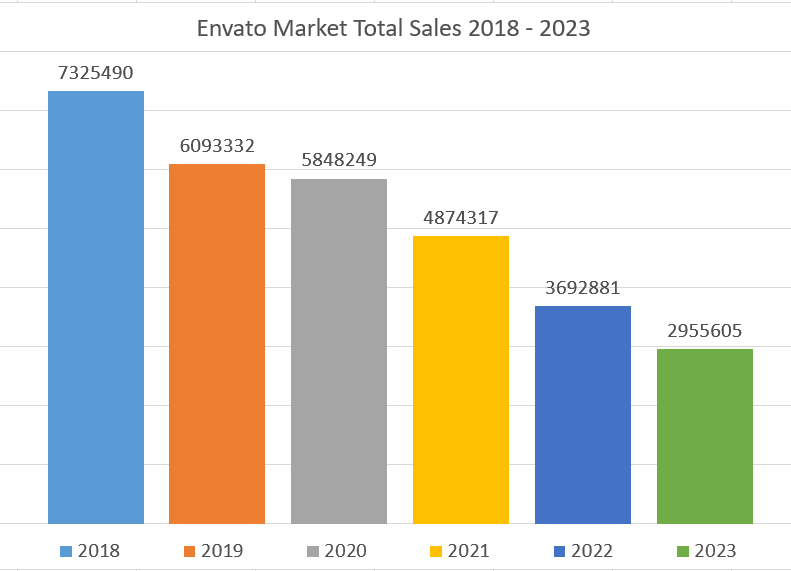
For anyone who’s built a business around WordPress themes, plugins, or creative assets sold on Envato’s platforms, this is not just a market trend. It’s an existential threat. So what happened? Why are sales falling while more people than ever are building websites, running online businesses, and consuming digital content? Let me give you some of my theories.
The Subscription Model Shift
Many authors point to one clear turning point: Envato Elements. Launched as a subscription service offering unlimited downloads for a low monthly fee, Elements promised customers convenience and value. But for creators, it was the start of a slow death spiral.
“You don’t even need to download anything to support Elements,” one author noted. “You pay to access it. So who gets that money? Not us. Not fairly.”
Elements fundamentally changed the nature of transactions. Previously, when a customer bought your item, you got paid directly. Now, income is diluted across a massive pool of creators, most of whom never see a return proportional to their work.
This is compounded by the fact that Elements promotes mass production. “Upload more,” they say, “and you’ll earn more”… But as countless developers have pointed out, the math doesn’t add up anymore. More uploads no longer mean more money. Many now report incomes as low as $0.01 a day, despite constant publishing and years of history with the platform.
If you check Envato Marketplaces items or profiles, you will find links to Elements everywhere:
- Sticky Top Bar
- Submenu in Top header Bar
- Main & Bold Menu Item
- Again A Submenu
- Main Section Big Banner Between Items
- Footer Big Banner
- Footer Menu Item

Also, while Elements is bursting, the old Envato Marketplaces are dying:

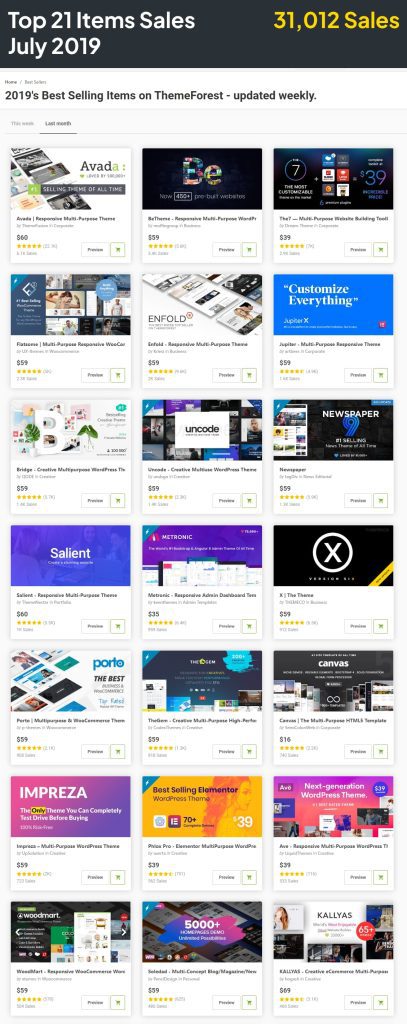
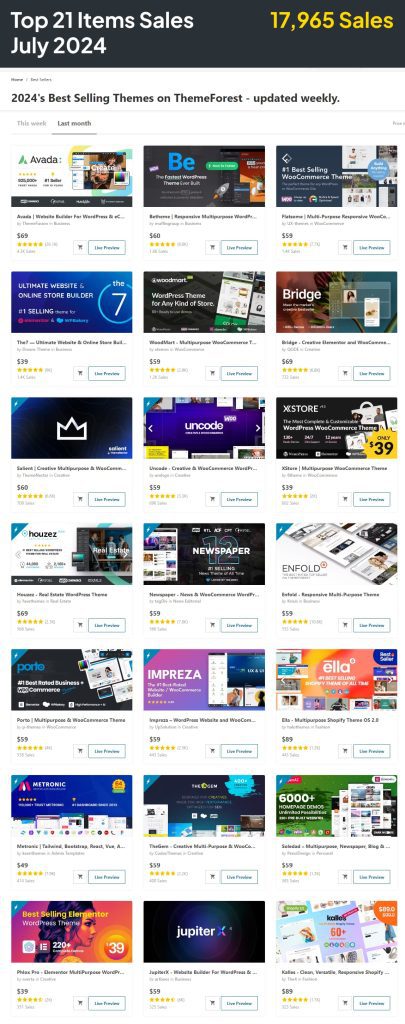

One overlooked side effect of this subscription-first model is what it’s doing to quality. When income is low, support becomes unsustainable. Updates slow down or stop entirely. Even top-selling authors admit they’ve told customers not to expect updates on items that earn them pennies. This isn’t a lack of work ethic. It’s a matter of survival.
When a single item is expected to feed you for months, and it barely earns you lunch money, the motivation to polish and improve it dies fast. And when authors are forced to lower prices just to get visibility, many WordPress themes are now listed under $20, it’s no surprise that customers start to associate low price with low value.
But ironically, pricing lower doesn’t help anymore. A $19 item still can’t compete with a banner on the product page that says “Download everything for $16/month.” Why pay for one when you can get thousands for less?
The WordPress side of Envato is especially brutal right now. In a desperate attempt to get sales, authors are slashing prices. Sorting by price on ThemeForest now shows hundreds of themes under $20. But instead of boosting sales, this price war has created a vicious cycle:
- Lower prices = perceived lower value
- Lower value = fewer sales
- Fewer sales = more price cuts
And the biggest loser? The customer. They end up with low-cost items that often receive little to no support or updates, because the authors can’t afford to keep working on them or are not motivated enough to sit through the hard customer support sessions, which come at a almost inexistent cost and return. If you add up also Envato + local taxes, authors end up with pennies in their pocket.
“When I see a $19 theme, I assume the author gave up,” one forum user admitted.
Another Pressing Issue: AI
Another wave is coming and some say it’s already here: product scraping for AI model training purposes. Several developers and creatives in the Envato community believe the platform is training AI models on existing content. Whether it’s music, video templates, or code, the writing on the wall is clear to them: replace the authors with machines.

“Why do they need us anymore? They’ve already got our files, titles, and metadata,” one veteran author stated on the forum.
Whether this is confirmed or speculative, the fear is real and understandable. Platforms like Envato once promised creators a chance to monetize their craft. But if AI starts generating WordPress themes, music tracks, or motion graphics at scale, how long until the value of original work hits zero? I suspect that not that long…
“Exclusive” Means Less Than It Used To
Another issue is with the Exclusive Author status of Envato. For years, being an Exclusive Author on Envato was a badge of honor. It came with higher commissions, a sense of belonging, and some extra exposure, as Envato rewarded exclusivity. But in 2025, many authors (including top ones) are walking away from exclusivity.
“I just removed my exclusivity after a 12-year relationship,” one Power Elite author shared on forums. “I feel weird about it, but I’m sure it’s the best decision I could’ve made.”
The sentiment is echoed by many. Selling elsewhere, even at smaller marketplaces or on personal websites, offers something Envato doesn’t anymore: control. You set the pricing model. You speak directly to your customers. And crucially, you aren’t competing with your own product being bundled into a $16 unlimited download buffet.
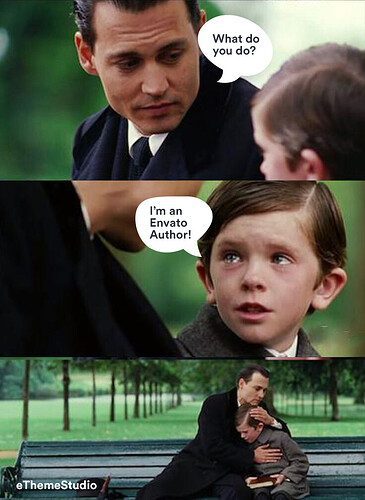
Even flagship names that once symbolized the marketplace’s golden age have pivoted away:
- Kreatura, the developers behind the wildly successful LayerSlider, quietly exited the platform after building a massive audience and internal automation system. They now sell directly and fully control their own ecosystem.
- The creators of Visual Composer, once bundled with thousands of themes and responsible for millions in revenue, rebranded, rebuilt, and left Envato behind to operate independently. The rebranding was needed because of Envato’s Exclusivity terms, the same named product could not be sold anywhere else, only on Envato. The solution was a rebranding.
- Slider Revolution, another plugin synonymous with the ThemeForest ecosystem, followed soon after. According to insiders, the decision was heavily influenced by discussions among top sellers, many of whom were frustrated with Envato’s Elements strategy.
So why the shift? Because exclusivity now feels like a trap, not a benefit.
With Envato Elements offering thousands of premium plugins and themes for a flat $16/month, authors suddenly found themselves competing against their own work. Instead of supporting authors, Envato began prioritizing volume-driven subscriptions. That undermined the very creators who built its empire.
“We tried everything to stay afloat,” said John from Kreatura. “But even with constant reinvestment, our numbers plateaued and then dropped. It became clear we were pushing a boulder uphill.”
Even worse, exclusivity clauses mean authors can’t experiment or test sales elsewhere without risking income or breaching terms. But now that commissions are shrinking, support burdens are rising, and the audience is migrating to Elements, that exclusivity simply doesn’t add up.
Outside Envato, authors are finding new opportunities:
- Better pricing freedom
- Direct customer relationships
- No forced bundling
- No cannibalization by subscription models
- More predictable revenue through dynamic licensing
Platforms like FastSpring, Paddle, Stripe, Freemius and our WPBay have opened doors to real independence. WP-focused sellers are increasingly creating their own stores or joining leaner, author-first platforms.
Everyone I’ve spoken to who left Envato has done better outside it. It just takes that first step. And yes, the first 5 sales after you leave are always the hardest…
Radio Silence from Envato’s Management
One of the most frustrating things for authors has been the lack of communication. Despite the obvious sales collapse, repeated pleas on the forums, and detailed sales breakdowns from community members, the response from Envato leadership has mostly been… silence.
“As usual, no word from the management,” wrote one veteran user on the forums. “We are glad you made a new logo and refreshed Elements. Now what?”
Some suspect that the silence is strategic, that Envato doesn’t want to openly admit that they’re pivoting away from the community that built them. Others believe the company has simply given up on individual authors and is chasing AI, automation, and bulk content partnerships with agencies. Whatever the reason, the lack of transparency has left long-time creators feeling abandoned. Which is really frustrating…
Is There a Way Out?
Some authors are trying to adapt. They’re leaving Envato entirely. Others are running their own storefronts using platforms like WooCommerce, Easy Digital Downloads, or Gumroad. A few are exploring niche marketplaces where quality and creator visibility still matter.
But it’s not easy. Marketing is hard. Traffic is expensive. And after years of relying on Envato’s ecosystem to do the heavy lifting, many authors are finding the move to independence daunting, but unfortunately… necessary.
First 10 days – Sales not found 404

This is the most common move we’re seeing: authors are going indie. No middleman, no commission cuts, no competing with unlimited-download banners. Just your own site, your own pricing, and direct communication with your customers.
Some popular tools used:
- WooCommerce (WordPress): flexible, well-documented, and has a huge ecosystem of plugins, but you need to set up everything from scratch and do also your marketing part
- Easy Digital Downloads: ideal for selling digital-only items like themes, plugins, or media, but still needs full setup and marketing
- Gumroad: great for fast setup, but limited customization, needs marketing
- Lemon Squeezy: gaining traction for SaaS and digital creators needing subscription models and licensing, but still has its limitations when it comes to customizability
Easier Alternative: Launching on Creator-Friendly Marketplaces
Envato’s rise left many smaller marketplaces in the dust. But now, some of those platforms are seeing new life. Here are a few that authors are exploring:
- Creative Market – More designer-focused, with better attention to branding
- TemplateMonster – Still active for themes and templates, though historically a mixed bag
- Design Bundles / Font Bundles – Not just for fonts anymore, increasingly theme and UI-oriented
- WPBay – (Yes, this is where I’m personally involved and where you read this article.) A platform built by and for WordPress developers, focused on fair treatment, visible authorship, and community
The idea here is not to find another platform to rely on blindly, but to treat these spaces as channels, not as a single point of failure. Authors are starting to think more like businesses, not just suppliers.
Going Niche and High-Touch
The race to the bottom has taught creators one thing: value trumps volume. Rather than chasing mass downloads, some developers are building small, focused tools for very specific audiences. I am thinking of things like: a WordPress plugin for academic publishing, a theme designed for yoga instructors or dog trainers, a mini SaaS tool with a $99 one-time license and direct support.
These creators are earning less traffic but more trust. And they’re keeping customers longer, sometimes converting them into consulting gigs or community members.
Also, a growing number of creators are pivoting toward content and education. Teaching what you know can pay better than selling your work.
Some of the education based ideas which can give an additional income boost are:
- Online courses
- Private membership sites
- Paid newsletters
- YouTube channels
If you’ve been building WordPress products for years, you have knowledge people will pay for. And you don’t need a massive audience. A small group of 100-500 loyal followers who trust your insights is enough to replace a marketplace income, if done right.
Once Again: What About AI?
Like it or not, AI is here and it is here to stay and some believe it’s the very thing that broke Envato’s model. But there’s an interesting shift happening: creators are beginning to use AI, not fight it.
Note that you can use AI to boost your productivity, by using it for:
- Speeding up content generation (landing pages, product copy, blog posts)
- Prototyping plugin ideas faster
- Creating documentation with less time
- Using AI for support bots and automation
- Developing AI plugins with real-time generation features or any other crazy new idea you might have, which involves AI

Final Thoughts
Envato may not be dead, but it’s not the home it once was. Authors who depended on it are now in a transition. Some are bitter. Some are burned out. But many are building again, on their own terms.
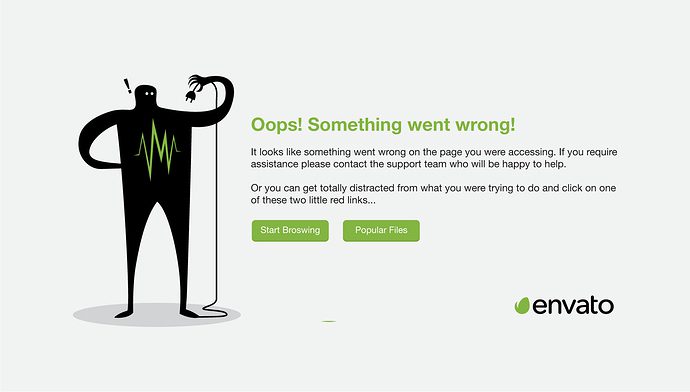
The truth is, no platform can replace you. Your experience, your insight, your unique way of solving problems for your customers, that’s what still matters. It’s not going to be easy, and it’s not going to happen overnight. But as one forum user said:
“If you care about customers, then you’ll be rewarded.”

tibi_diablo
May 10, 2025Thank you for this article… Envato is a sad story of greed and stupidity…
Szabi - WPBay
May 11, 2025I hear you. It really is frustrating to see how a platform that once empowered creators has drifted so far. So many smart, talented authors were pushed out by decisions that prioritized short-term growth over long-term trust. Hoping we can build something better going forward.
tibi_diablo
May 19, 2025The issue is that this short-term income made the owner rich but destroyed the marketplace…
Tomasz Leder
August 14, 2025Unfortunately, we are leaving Envato and have opened our own store at https://cocos.codes/. We also plan to sell on WPBay… It would be great if it were possible to add PrestaShop plugins. How do you plan to promote this platform?
Szabi - WPBay
September 11, 2025Welcome to WPBay! We promote the platform on LinkedIn, Google and YouTube. Also, publishing content and tutorials to drive organic traffic to the site. You are welcome to join WPBay with your plugins, looking forward to approve them for sale here. 🙂